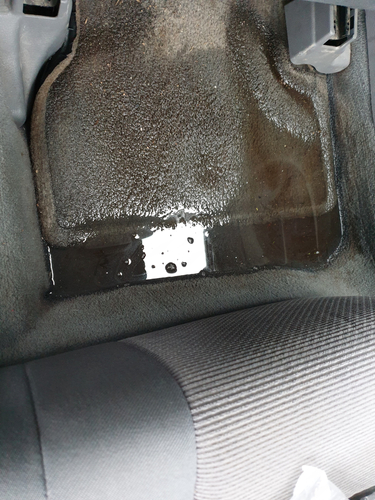Drying out a wet car: A wet car interior can be a frustrating experience, as it may lead to unpleasant odors, mold, and damage to the upholstery or electronics. Whether your car got wet due to an open window during a rainstorm, a flood, or a spilled drink, it’s essential to dry it out as soon as possible. Here are some effective methods for drying out a wet car:
- Remove excess water:
Before you start the drying process, remove any excess water. You can do this by using a wet-dry vacuum or towels to soak up the water from the seats, carpets, and other affected areas.
- Ventilate the car:
Open all the doors and windows to promote air circulation, which will help speed up the drying process. If the weather permits, leave the doors and windows open for several hours.
- Use fans or air movers:
Place fans or air movers around the car, facing the wet areas. This will help accelerate the drying process by moving air across the damp surfaces.
- Utilize a dehumidifier:
A dehumidifier can help remove moisture from the air, speeding up the drying process. Place the dehumidifier near the wet areas and let it run for a few hours or until the moisture is significantly reduced.
- Dry with heat:
On a sunny day, park your car in direct sunlight and leave the windows slightly open. The heat from the sun will help evaporate the moisture. Alternatively, you can use a portable heater or your car’s heater to increase the temperature inside the vehicle.
- Use desiccants:
Desiccants, like silica gel or cat litter, can absorb moisture and help dry out your car. Place containers of desiccants in various spots throughout the car and leave them for a day or two. Replace them as needed until the moisture is gone.
- Clean and treat upholstery:
Once the car is dry, it’s important to clean and treat the upholstery to prevent mold and mildew growth. Use a mild detergent and water to clean fabric upholstery or a leather cleaner for leather seats. After cleaning, apply a fabric or leather protectant to prevent future damage.
- Check electronics:
If water has reached any electronic components, it’s crucial to address the issue as soon as possible. Disconnect the battery and carefully inspect affected components for signs of damage or corrosion. If you’re unsure how to proceed, consult a professional.
Special note – Carpet Padding
If the carpet padding is wet the carpet trim must be pulled up, the carpet propped up, water squeezed out of the foam padding, excess water vacuumed up, and air blown across the exposed padding (hot air if possible). You can use a fan, leaf blower, or heated blowers. This can take several hours, and even several days depending on how thick and dense the foam padding is.

